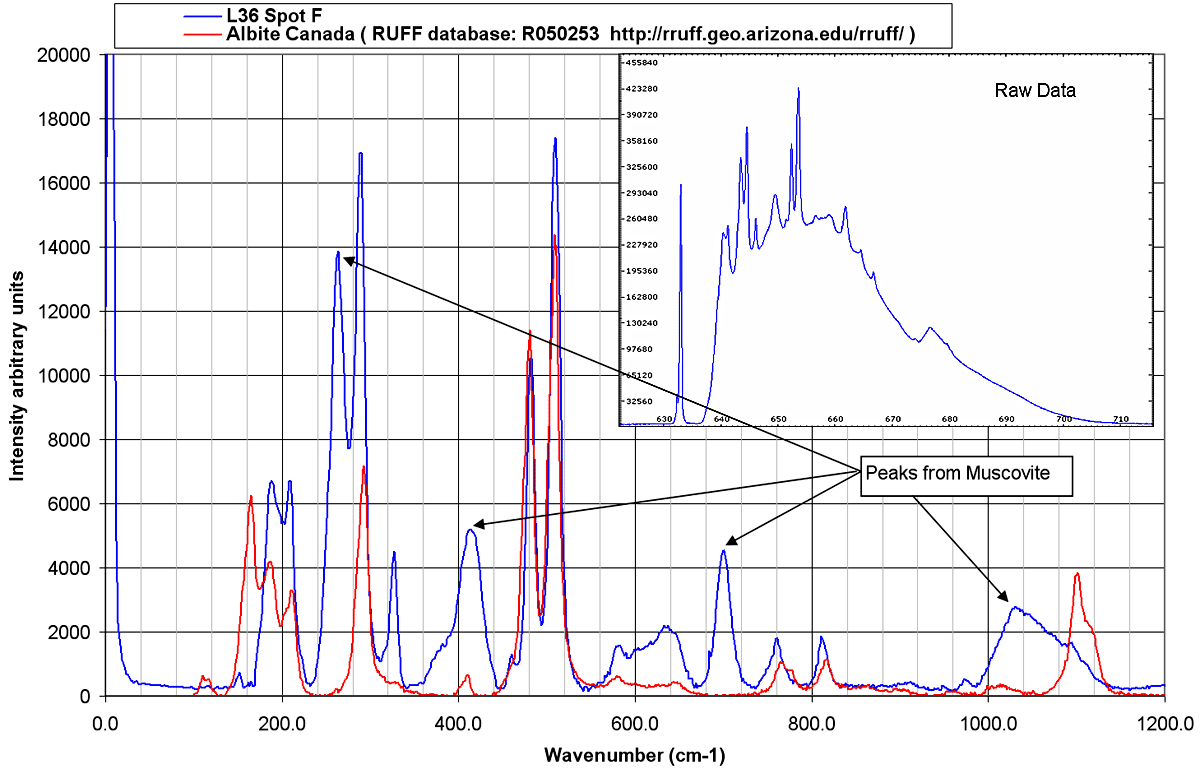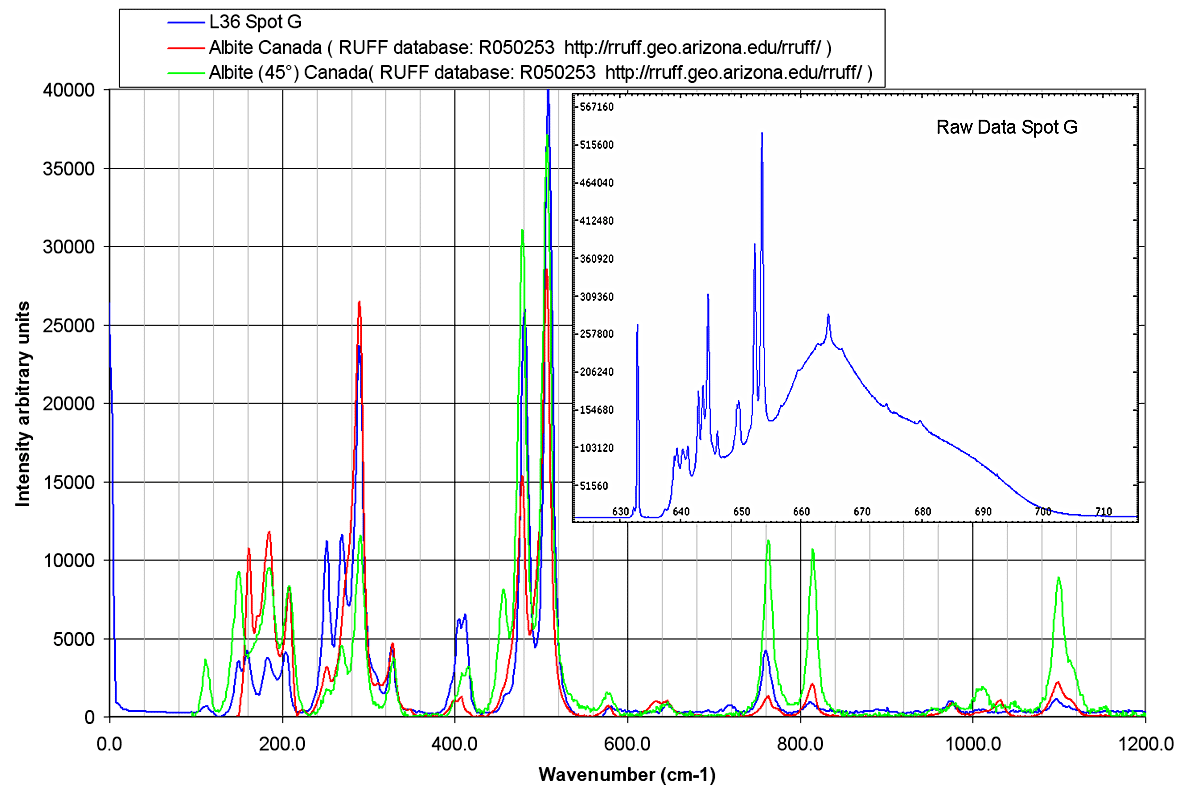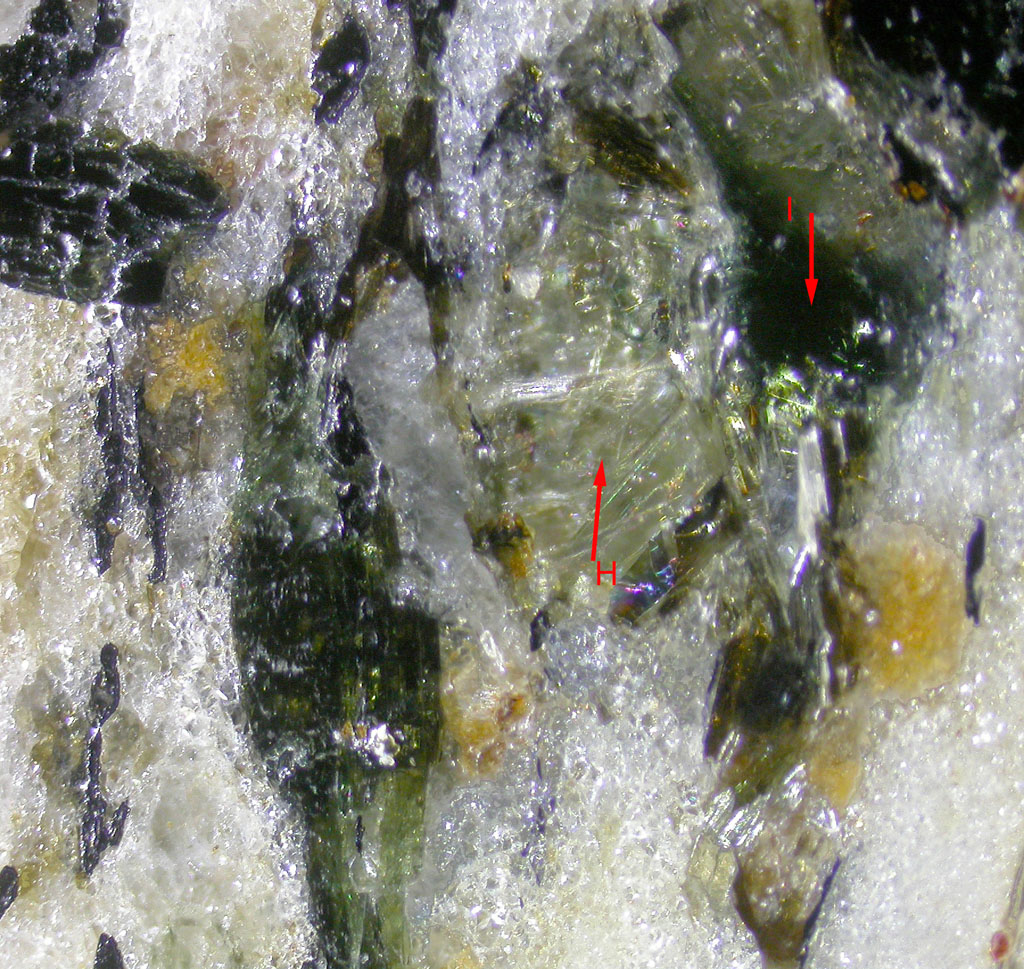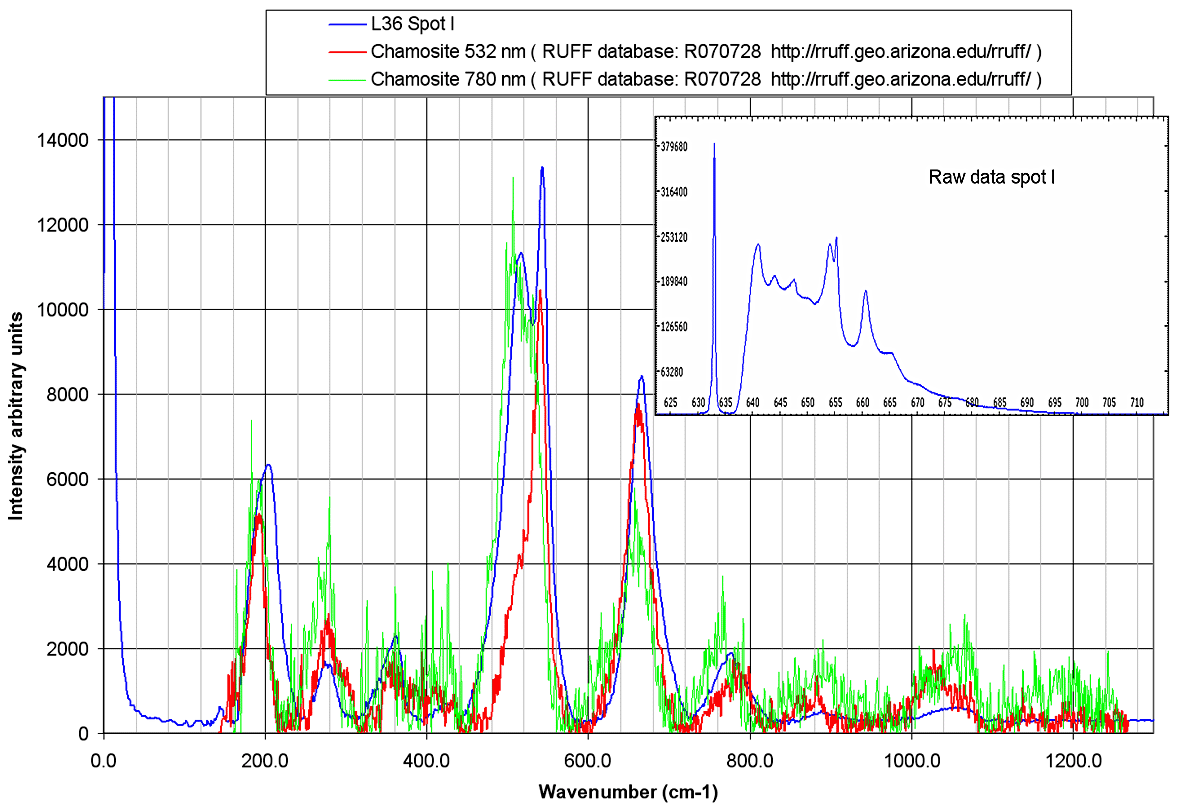Hornblende Mica Schist Raman Spectra (2)
![]() Raman Main Page
Previous Page
Next Page
Raman Main Page
Previous Page
Next Page
| Albite |
 |
| Spot F: grey transparent crystal. |
 |
| The Raman spectrum seems to be the addition of 2 minerals contributions: Albite and Muscovite. The peaks which could be attributed to Muscovite (including the wide fluorescence peak at 1040 cm-1) are marked with black arrows. On the image above, the shadow of some darker greenish crystals appears through the grey transparent albite. Due to the lack of z resolution of the Raman microscope, these crystals may contribute to the Raman spectrum. |
 |
| G spot: another transparent crystal. |
 |
| Spot G gives a pure Albite Raman spectrum. Due to changing crystals orientations, the spectrum here can be slightly different from the spot F spectrum. |
| Muscovite Chlorite |
 |
| Two different crystals have been selected from that image: Spot H is a brilliant mineral. Spot I is a dark green mineral which could at first glance be identified as hornblende although the shape is much more irregular. |
 |
| The Raman spectrum from the brilliant crystal is muscoviteagain with an additional peak at 1040 cm-1. |
| Chlorite |
 |
| The spot I Raman spectrum is quite similar to Chamosite, a chlorite group member. |
 |
| Spot J has been chosen to be a representative crystal from the collection of small grey particles which appear throughout the thin section of this rock. At first glance, those crystals could be quartz. |
 |
| The Raman spectra of this spot J particle and another similar crystal called spot K (picture not reproduced here) show that the clear transparent mineral is albite. Some of the Raman peaks intensities can be modified due to crystal orientation. |